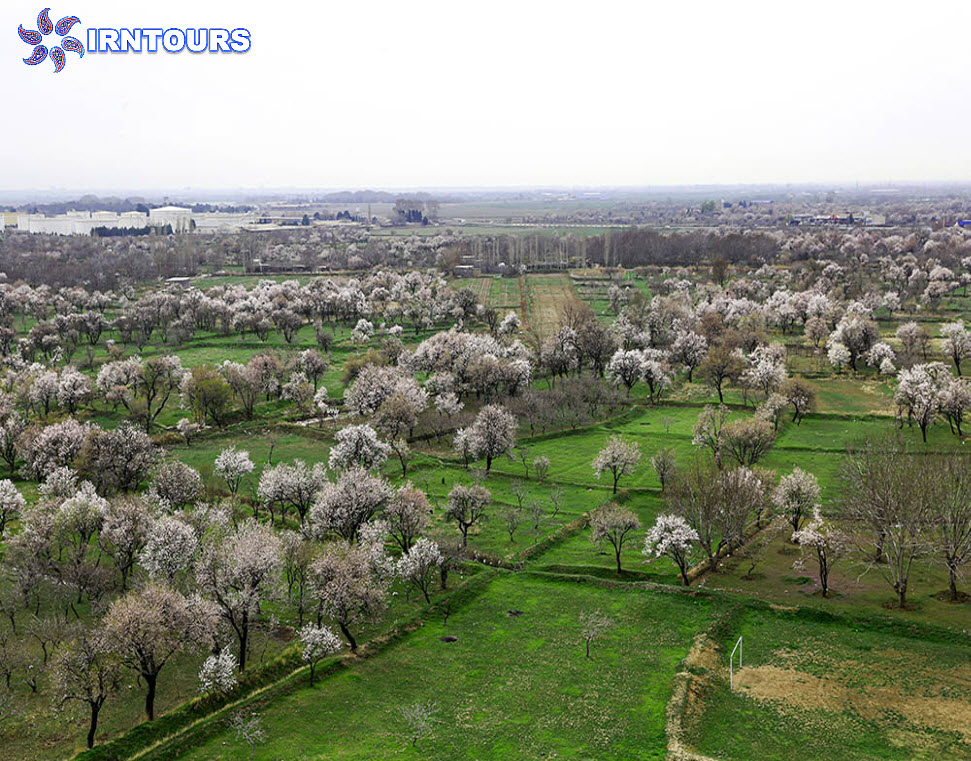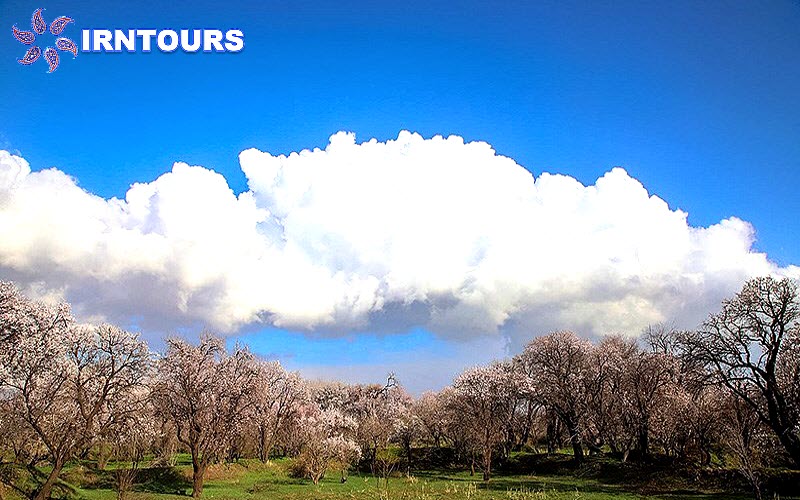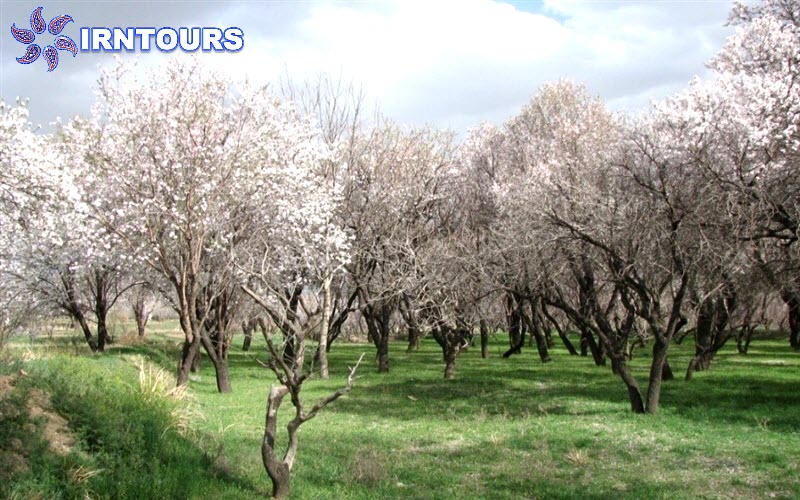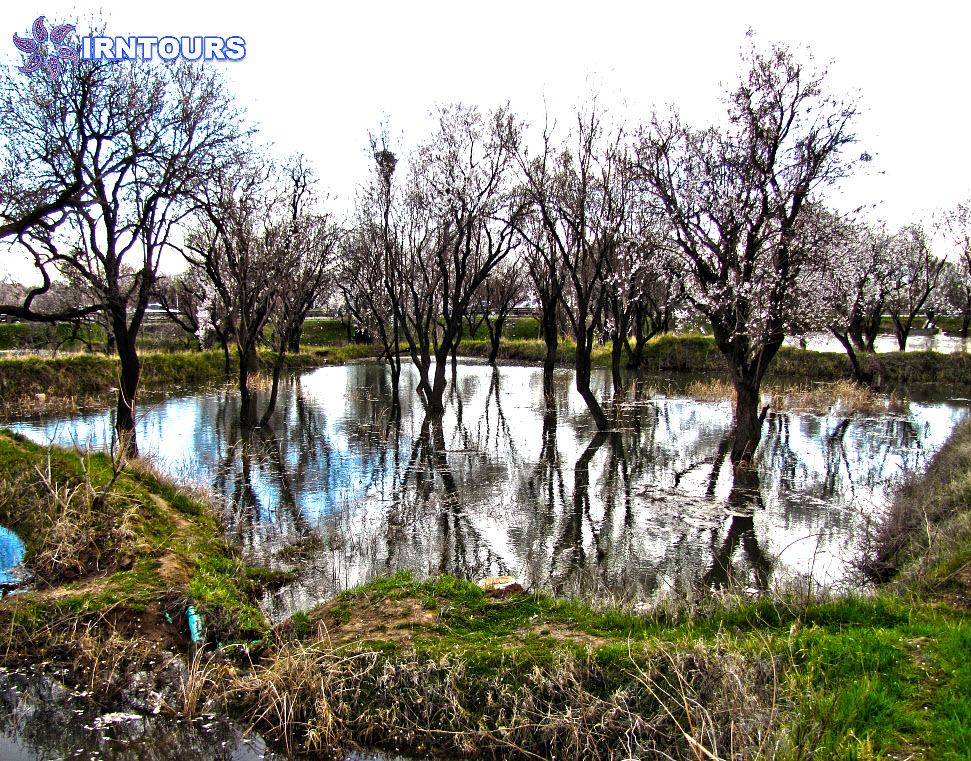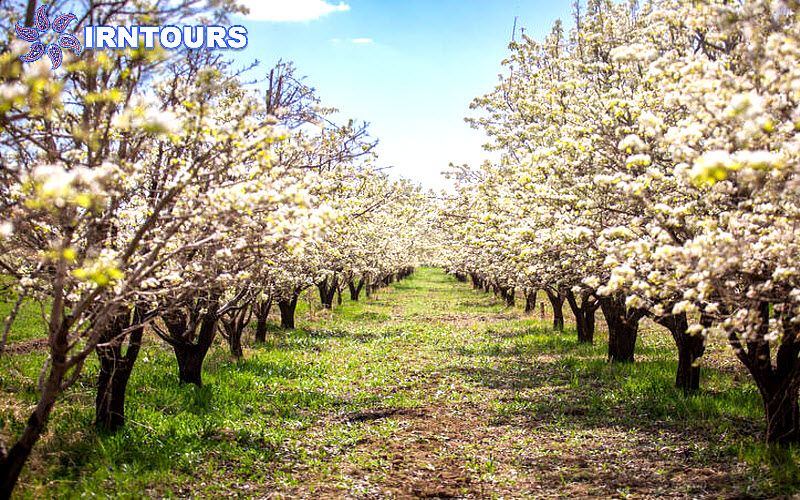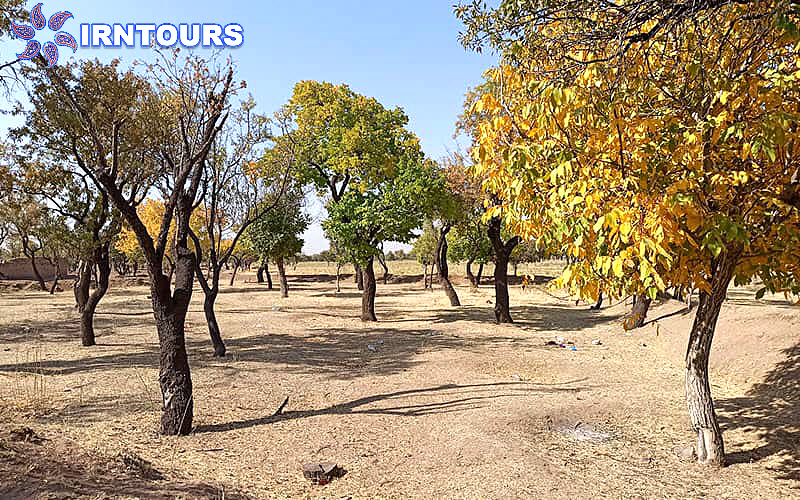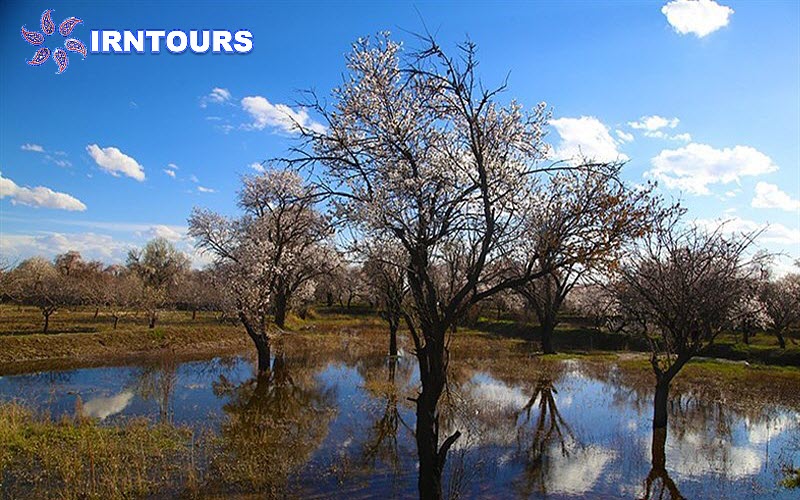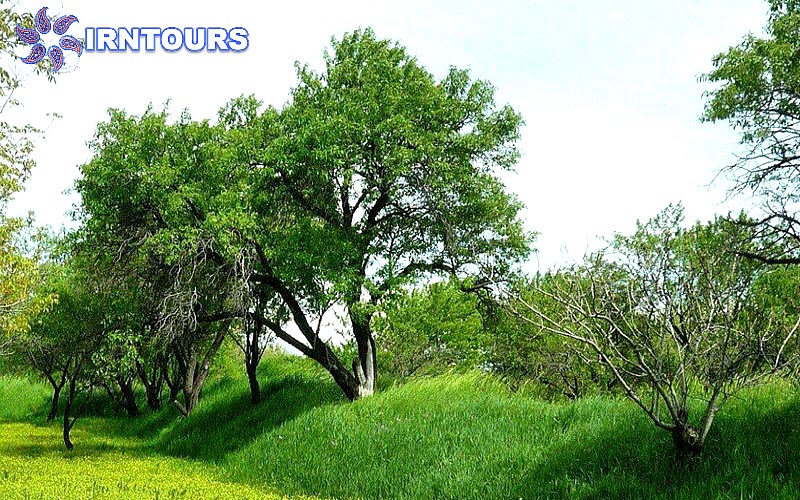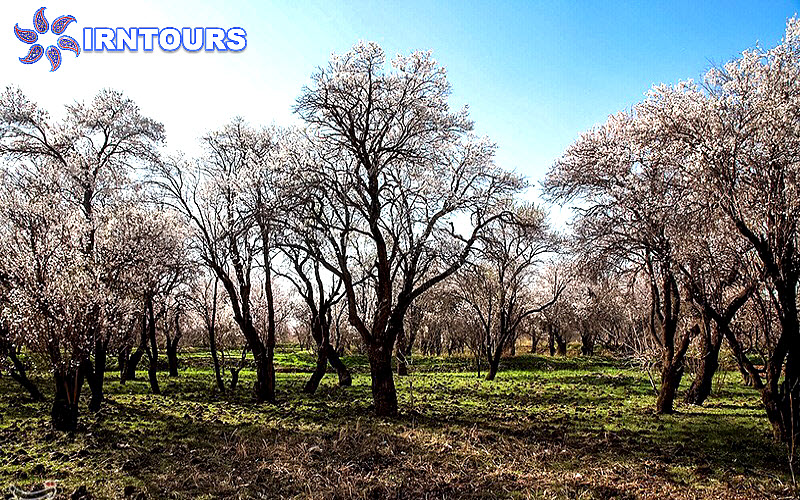About Qazvin Traditional Garden
The traditional garden of Qazvin is a collection of gardens that cover the southern, eastern and western half of the city. These gardens, which have an area of about 2,600 hectares, in addition to being historical, act as a defense shield of the region against fine dust and pollutants and a green belt and breathing lung of the city. This orchard is considered one of the sightseeing places of Qazvin and its main products include grapes, almonds, pistachios, apples, peaches, berries, and walnuts.
- Address: Qazvin city, Qazvin province
The traditional garden is located in the east, west and south of Qazvin city.
Introducing the traditional garden of Qazvin
The traditional garden of Qazvin city is considered a valuable heritage of the ancestors and residents of this city throughout history and an example of the traditional agriculture of the ancients, which has continued to exist until today and is still present in the lives of the people of Qazvin city. The life of this garden is more than 1000 years and there are many 300-400-year-old pistachio trees in it.
Qazvin garden has an area of about 2,600 hectares and surrounds Qazvin city in a circle. These gardens are more than 10,000 plots, each of which is separated by a dirt border and has a private ownership registration plate.
The gardens of Qazvin, which have played an important role in the city’s economy throughout history, are irrigated by five seasonal and flood rivers named Aranzak, Dizj, Vashte, Deli Chai and Zoyar, and the reason why the word “traditional” is applied to this garden is the use of the traditional method of irrigation called It is like “Ghargabi”. The garden remains a vast watershed, which is flooded once or twice by the flowing water and floods of five seasonal rivers in the winter and spring seasons in plots with an average height of one meter. Now, due to the development of the city and the harvesting of water from these rivers, the traditional garden of Qazvin is struggling with the problem of water scarcity.
As the most basic element of the Qazvin ecosystem, the garden has shaped the behavior of people in this region and shaped the social identity of the people of Qazvin. This issue caused it to be registered in the list of national works in 2013 and is on the way to be registered globally. Although the traditional gardens of Qazvin are the sustainable capital of this region, they have been severely destroyed and threatened by the wrong approach of urban management. One of these cases occurred on Saturday, June 4, 2022; When a group of city belt project implementation agents attacked the traditional garden of this city with tools and devices of Qazvin Municipality and destroyed several green and fertile almond and old pistachio trees so that the Imam Reza bridge project could proceed.
History of Qazvin traditional garden
Until a few decades ago, the city of Qazvin was located in a green circle of lots of almond and pistachio trees and grape bushes. The traditional garden, which is more than 1,100 years old based on written history and many believe it dates back to the Sassanid period, covered about 4,000 hectares of the city. A map drawn of Qazvin city and Baghistan in 1915 shows that 100 years ago, the area of Baghistan in the vicinity of Qazvin was about 6 times the area of the city. Unplanned and unbalanced development of the city has increased the population of Qazvin in recent decades and the size of Baghistan has almost reached half.
In many travelogues, Qazvin garden is mentioned as a beautiful and fruitful paradise. Zakaria bin Muhammad bin Mahmud Qazvini (605-683) carefully deals with the natural structure of the city of Qazvin in his book Athar al-Balaad and says about the gardens of Qazvin:
Qazvin is a famous and prosperous city, in a vast plain, with clean soil and many gardens and trees, built with a good foundation, and there are two cities in it, one in the middle of the other. A small city is called a city, it has ramparts and gates, and a big city is surrounded by a small city, and it is also a rampart and gates. The gardens surround the big city and the fields surround the gardens and orchards.
In the description of Zakaria Qazvini, the structure of the city of Qazvin in interaction with the natural bed and the position of the city, rivers, gardens and agricultural lands have been well expressed. The plan he drew of Qazvin city is considered a very valuable document of this historical city.
Nasser Khosro Qabadiani said about Qazvin:
I saw Qazvin as a good city; Hesin and Congress barrages were built on it and there were good markets, except that there was little water in it. There were many gardens, without walls and dirt and without any obstacles to enter the gardens.
Hamdullah Mostofi is another person who wrote about Qazvin Garden:
Qazvin is from the fourth climate, its climate is moderate, its water comes from canals and there are many gardens, and they irrigate once every year during the watershed. Grapes, almonds, and pistachios are obtained from him.
In the book of Minodar, it is stated regarding the irrigation of the garden:
The water of these gardens comes from two rivers called Dizej and Arnezk, which originate from the northern valleys and the northern mountains of Qazvin. After the snow starts to melt and the rain starts to fall, the water flows in the two rivers Dizj and Arnezk, and it is divided into “tips” and “tools” on a scroll in the hands of Dehkhodayan and owners, and each garden is given its title. . This practice continues until 70 days after Nowruz. Gardeners and gardeners are obliged and responsible to water all the gardens in their area of responsibility. Although the trees and vineyards of Qazvin are watered once a year as described above, fortunately they are always green and fresh.
The characteristic of Qazvin traditional garden
Native or traditional gardens are fruit gardens that are mostly located outside the city walls. The city of Qazvin has always been threatened by the floods of the nearby rivers. Due to their special design, these gardens had the ability to absorb floods inside, and in addition to protecting the city, they made the city green and refreshing. In addition to the role of defense against floods, the garden was an economic source and a place of employment for the city’s residents.
The presence of traditional gardens on three sides of the city reduces the temperature of the city by 4 to 6 degrees. In hot seasons, this reduction in temperature can have a very important effect on the optimal energy consumption for cooling devices.
Other features of this garden include the following:
A sustainable model of natural, historical agriculture and a unique horticulture culture and a special traditional management method
Absorption of water from seasonal rivers and their floods and strengthening of underground water tables
Production and economic unit for city residents
Agricultural Heritage and Biodiversity Museum
City air purification
The beauty of the environment and the view of the city
Creating a recreational environment for city residents
Qazvin traditional garden products
The gardens around Qazvin have fruitful trees such as pistachios, almonds, apricots, grapes and walnuts, which produce sweet and delicious fruits with one watering in winter and spring. Most of the products produced in the garden are organic without the use of poisons and fertilizers. The famous green pistachios of Qazvin, Shahani grapes and Mohammad Rezaei apricots are among the typical fruits of Qazvin’s traditional garden.
There are unfruitful trees and bushes that are completely resistant to drought and unfavorable environmental conditions in this garden.
Tips for visiting Qazvin traditional garden :
- The traditional garden of Qazvin has its glory in every season; It welcomes tourists with its blossoms in the spring, in the summer with its pleasant greenery, in the autumn with a thousand-color effect, and in the winter with a snowy landscape. However, the best time to visit this garden is spring and summer.
- Qazvin traditional garden is open 24/7.
- During your visit, avoid littering, even eggshells and cigarette butts.


